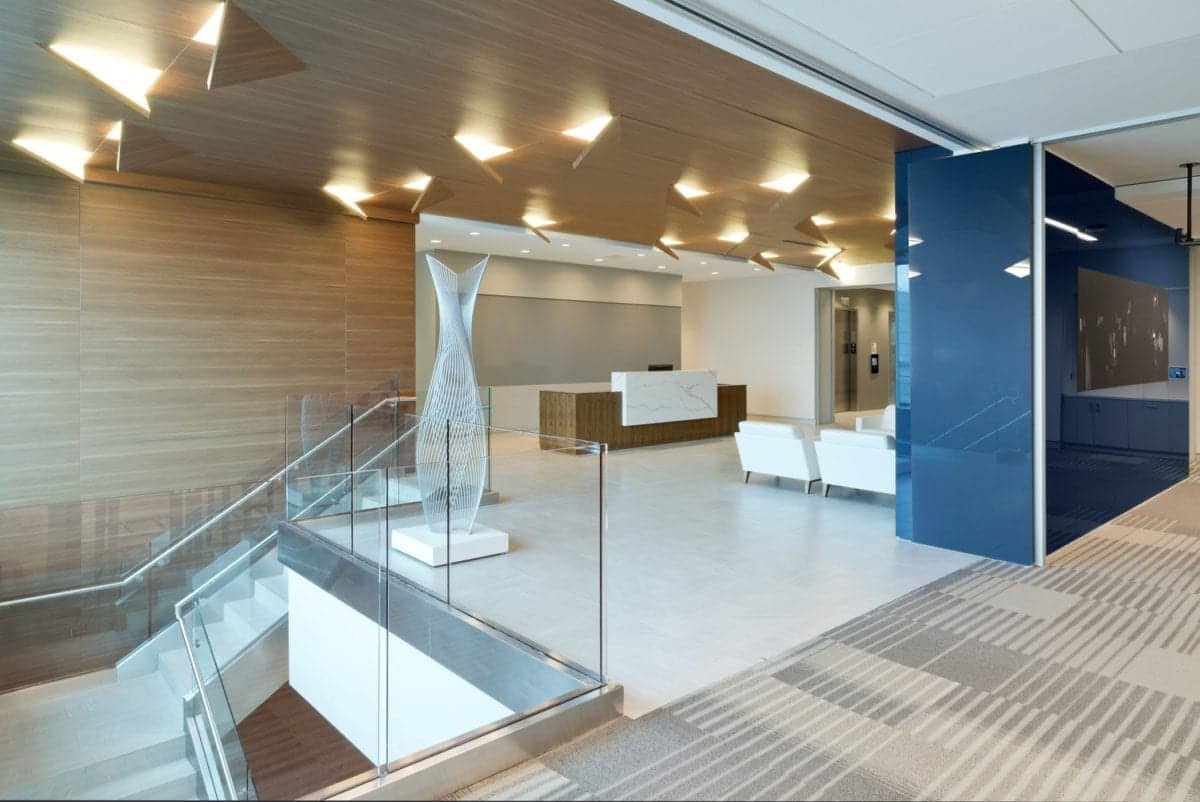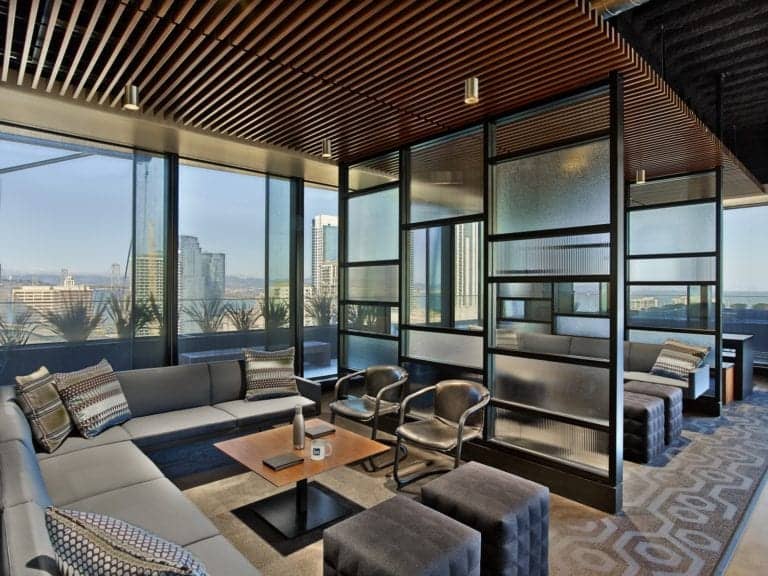More...
By Gary Bouthillette, AIA, NCARB, LC | Senior Director of Lighting Design | April 12, 2017
GLARE, BRIGHTNESS, AND WELLNESS ARE TOP CONCERNS.
Lighting plays a significant role in the built environment, impacting not only ambiance and functionality but also productivity and wellbeing—all of which are vital in today’s resilient workplace. Given the complexity of designing interior lighting schemes, an expert should be engaged for every project, whether an existing facility or an as-yet-built one. In the process of helping clients achieve optimal lighting scenarios, certain concerns come up again and again: how to mitigate glare and brightness and whether LED is the healthiest and most sustainable choice.
Glare from Overheads
To paraphrase the Illuminating Engineering Society of North America, glare is the presence of more light than the eye can adapt to without discomfort or loss of visual performance. Glare is literally in the eye of the beholder: some individuals are more glare-sensitive due to eye conditions, age, or other factors. As such, even with a thoughtful lighting design, a small number of sensitive end-users may still be impacted.
Direct glare from overheads is the most common issue. One of the best solutions is a task-ambient strategy that gives individuals more autonomy over their immediate environment. In this scenario, user-controlled repositionable task lighting provides the remainder.
Metrics calculated by computer simulation (Visual Comfort Probability ratings, for example) can also be used to predict and therefore minimize glare.
Brighter-Than-Expected Lighting Level
With fixtures operating at full power, the light level in a new LED-lit space can be 10-20% higher than the space was designed to provide. Since LEDs gradually decrease their light output over time, systems are often designed with extra output capacity on day one. This ensures optimum light levels will be maintained after many years of use, thus resulting in a resilient workplace.
Also affecting perception of brightness is the light sources’ correlated color temperature, measured in degrees Kelvin . We tend to perceive high-color-temperature light (4000K or more) as “cooler” and brighter, which can enhance the perception that a space is over-lit.
In both cases, dimming control can be used to adjust the extra light output. Most LED light fixtures are inherently dimmable—meaning no additional cost to the client other than that of compatible controls (slide dimmers, touchpads, etc.)—and many energy codes mandate dimming for offices spaces. More advanced control systems can tune light levels automatically and transparently, so occupants get just the right amount of light for the tasks at hand.
LED – The Right Choice
In 2016, the American Medical Association published a report identifying potential health effects of outdoor LED fixtures that emit a cool-color-temperature light (specifically 4000K)—the most significant being a possible disruption to circadian rhythm. Although the findings don’t necessarily translate to interior lighting, the report nonetheless raised some concerns about the work environment. Professionals and manufacturers think more research is needed to draw conclusions about the effects.
Based on the design of millions of square feet of office space, we have observed a few things that will help guide future decision making. For one, there is not a more sustainable choice today than LED lighting technology. For most workspaces, lighting-color temperatures of about 3500K can provide a more neutral look and mitigate the amped-up feeling that many people get from cooler LEDs. And, moreover, because LEDs are easy to control and dim, they contribute to user autonomy, satisfaction and a more resilient workplace.
Like What You See?
Learn more about IA's approach to lighting design! Click below to read "Lighting in 2018: Diversity is Key."
Good lighting will brighten up your day!





